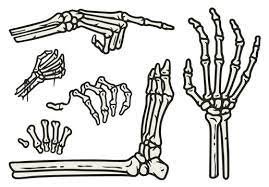The World of Bikes: More Than Just Two Wheels 87
Bikes have been a trusted companion of people for decades. Whether you’re zipping through traffic, conquering mountain trails, or just taking a weekend ride around the neighborhood, bikes offer freedom, fitness, and a whole lot of fun. In this article, we’ll explore everything that makes bikes so special—from their history and types to the benefits and modern innovations that keep them rolling strong.
A Quick Spin Through History
Bicycles didn’t always look like the sleek machines we ride today. In fact, the very first models didn’t even have pedals!
The earliest known bicycle-like invention was the Draisine, also called the “running machine”, invented in 1817 by Karl von Drais in Germany. It was a wooden frame with two wheels and a handlebar, which people would push with their feet—almost like a Flintstones car. It wasn’t fast or comfortable, but it laid the groundwork for what would soon become a global phenomenon.
Fast forward to the 1860s, and the “boneshaker” arrived. These were the first bikes with pedals attached to the front wheel, but they were made of metal and had solid wheels, making for a pretty rough ride. Then came the high-wheeled penny-farthings, with one giant front wheel and a tiny rear one. They looked cool but weren’t exactly safe—falling off one of those meant serious injuries.
It wasn’t until the 1880s that the modern “safety bicycle” emerged, featuring equal-sized wheels, a chain drive, and pneumatic tires. This design revolutionized personal transportation and gave rise to the cycling culture we know today.
Different Types of Bikes for Different Riders
Just like cars, bikes come in a variety of shapes and sizes—each designed for a specific purpose or type of terrain. If you’re in the market for a new bike or just curious about the options, here’s a breakdown of the most popular types:
1. Road Bikes
These are the sleek, lightweight bikes you often see zipping past you on city roads or rural highways. Road bikes are designed for speed and efficiency, making them perfect for long-distance rides or competitive racing. They have narrow tires, drop handlebars, and a lightweight frame to reduce wind resistance.
But road bikes aren’t just for pros. Casual riders who enjoy fitness or group rides often choose them for their speed and smooth ride. One downside, though, is they aren’t great for rough terrain or heavy loads.
2. Mountain Bikes
Mountain bikes are rugged and built to handle off-road conditions like rocky trails, muddy paths, and steep hills. They feature wide, knobby tires for grip, strong frames for durability, and suspension systems to absorb shocks.
There are several sub-categories here too—hardtail (front suspension only), full suspension (both front and rear), and even fat bikes with super-wide tires for snow or sand. If adventure is your thing, a mountain bike might just be your best buddy.
3. Hybrid Bikes
Can’t decide between road and mountain? A hybrid bike might be your solution. These versatile bikes combine the best of both worlds: comfortable upright seating, medium-width tires, and flat handlebars.
They’re ideal for commuting, weekend rides, and light trail use. Hybrids are perfect for people who want a general-purpose bike without committing to one specific style of riding.
4. Electric Bikes (E-Bikes)
E-bikes are revolutionizing urban mobility. With a battery-powered motor assisting your pedaling, you can ride longer distances and conquer hills without breaking a sweat. They’re especially popular among commuters and older riders who want to enjoy biking without the full physical strain.
Modern e-bikes look and feel a lot like regular bikes—some even allow you to switch off the motor and ride manually when you want more of a workout.
The Health and Environmental Benefits of Biking
One of the biggest reasons people fall in love with biking is its positive impact on health and the environment. Let’s take a closer look at how bikes benefit both you and the planet.
1. Great for Your Body
Cycling is an excellent full-body workout. It boosts cardiovascular health, builds muscle strength (especially in the legs and core), and improves joint mobility. Since it’s low-impact, it’s gentler on the knees compared to running or other high-impact exercises.
Plus, biking burns calories, making it a great way to manage weight or improve overall fitness. A one-hour ride can torch anywhere from 400 to 1000 calories, depending on intensity and terrain.
2. Mental Health Boost
Riding a bike can also do wonders for your mind. The rhythmic motion of pedaling, the fresh air, and the sense of freedom all contribute to reduced stress and improved mood. Many people find cycling to be meditative and calming, especially when done in scenic environments.
In fact, studies have shown that regular biking can help reduce anxiety, depression, and even symptoms of ADHD.
3. Eco-Friendly Transport
Bikes are a powerhouse when it comes to sustainability. They don’t use fossil fuels, don’t emit harmful gases, and require far fewer resources to manufacture compared to cars. By choosing to bike rather than drive—even just once a week—you’re cutting down on pollution and helping reduce your carbon footprint.
In cities with heavy traffic and air pollution, more cyclists on the road can make a noticeable difference in air quality and congestion.
Essential Gear and Safety Tips
So, you’ve decided to start biking—or maybe you already ride and want to take things more seriously. Either way, having the right gear and following safety guidelines is key to enjoying the ride.
1. Must-Have Gear
- Helmet – Always wear one. It’s the single most important piece of safety equipment.
- Lights & Reflectors – If you’re riding at dawn, dusk, or night, make sure you’re visible.
- Lock – A sturdy bike lock will protect your investment when parked in public.
- Padded Shorts – These can save you from a sore rear after long rides.
- Water Bottle Holder – Staying hydrated on the go is crucial.
Depending on your riding style, you might also want to invest in gloves, a bike pump, repair kit, and even a bike computer or smartphone mount for navigation.
2. Safety Tips
- Obey traffic laws just like any other vehicle.
- Use hand signals to indicate turns or stops.
- Always check your brakes and tire pressure before riding.
- Stay alert and avoid distractions, especially in urban areas.
- Ride in a straight line, avoid weaving, and be predictable to motorists.
Remember, the safer and more confident you feel on the road, the more enjoyable your biking experience will be.
Modern Trends and the Future of Biking
The world of biking is constantly evolving. From smart bikes with GPS tracking to bike-sharing apps and ultra-light carbon fiber frames, cycling has embraced innovation with open arms.
Urban planners are also taking bikes more seriously. Many cities around the world are building dedicated cycling lanes, promoting car-free zones, and supporting bike-share programs to encourage eco-friendly transport.
Another growing trend is bikepacking—a combination of biking and camping, where you travel long distances on a bike while carrying all your gear. It’s like backpacking, but on two wheels.
Electric cargo bikes are also gaining popularity, especially for families or small business deliveries. They offer a practical, green alternative to cars for short-distance hauling.
Conclusion: Two Wheels, Endless Possibilities
At its core, biking is about freedom. It gives you the power to go where you want, when you want, using nothing but your own energy. Whether you’re commuting to work, exploring nature, racing for sport, or simply having fun, a bike can fit seamlessly into your lifestyle.
The beauty of bikes is that they’re for everyone—kids, adults, seniors, beginners, pros. And with today’s options and technology, there’s truly a bike for every purpose.
So, dust off your helmet, pump up those tires, and hit the road or trail. Because life is better on two wheels.



